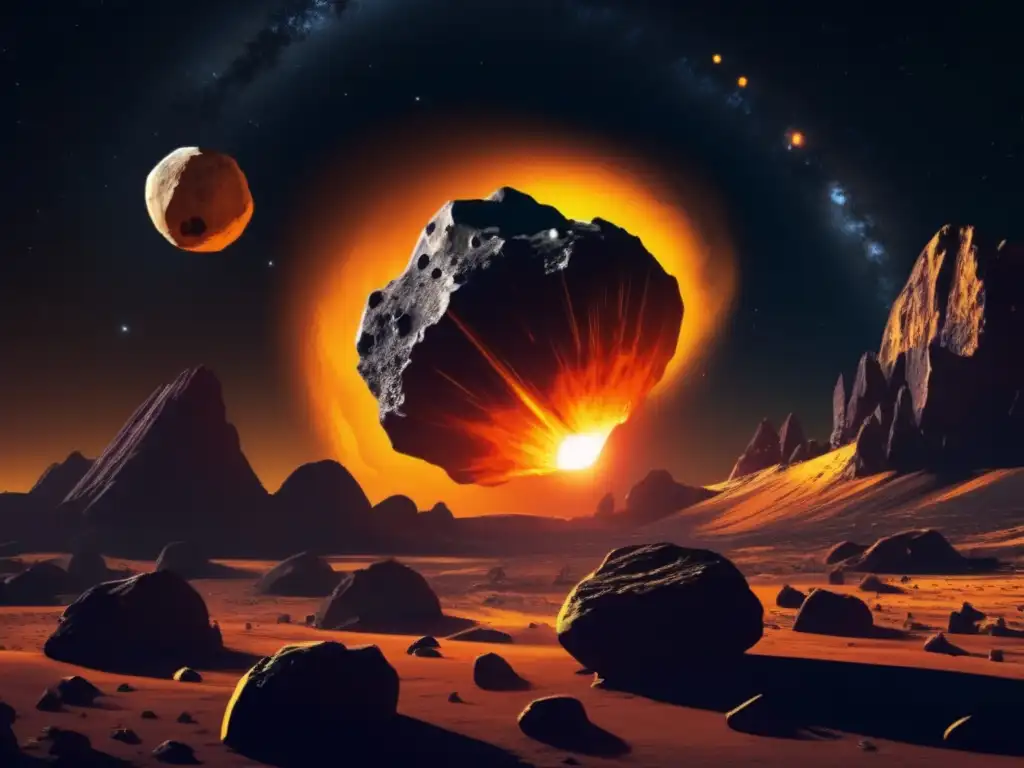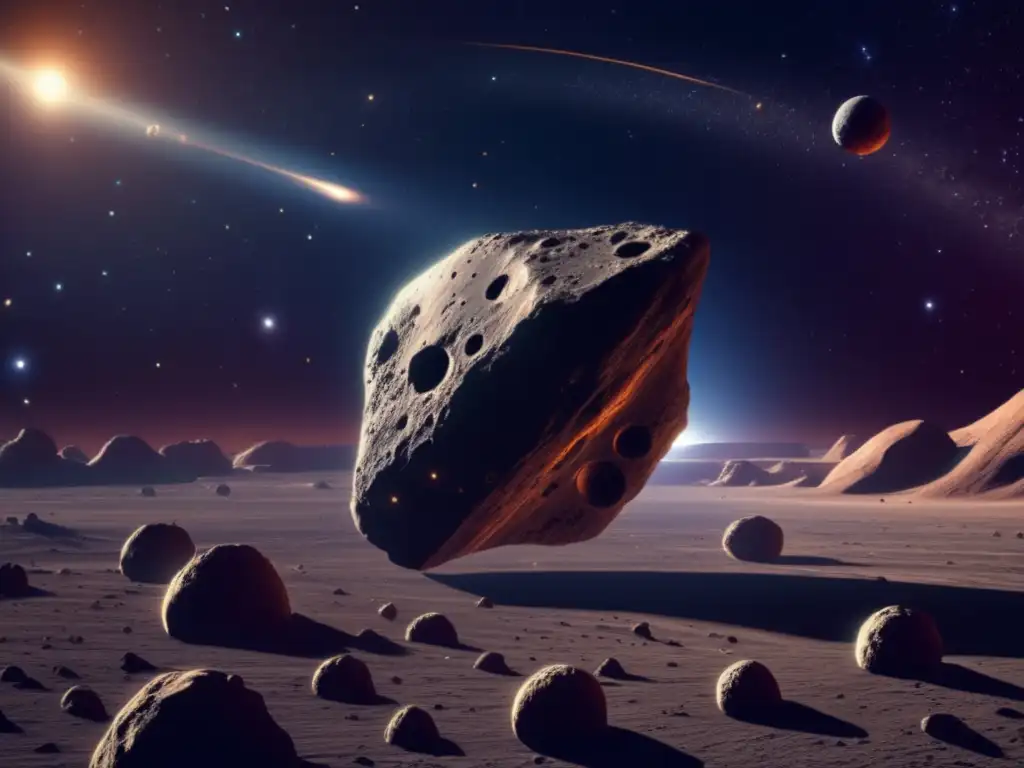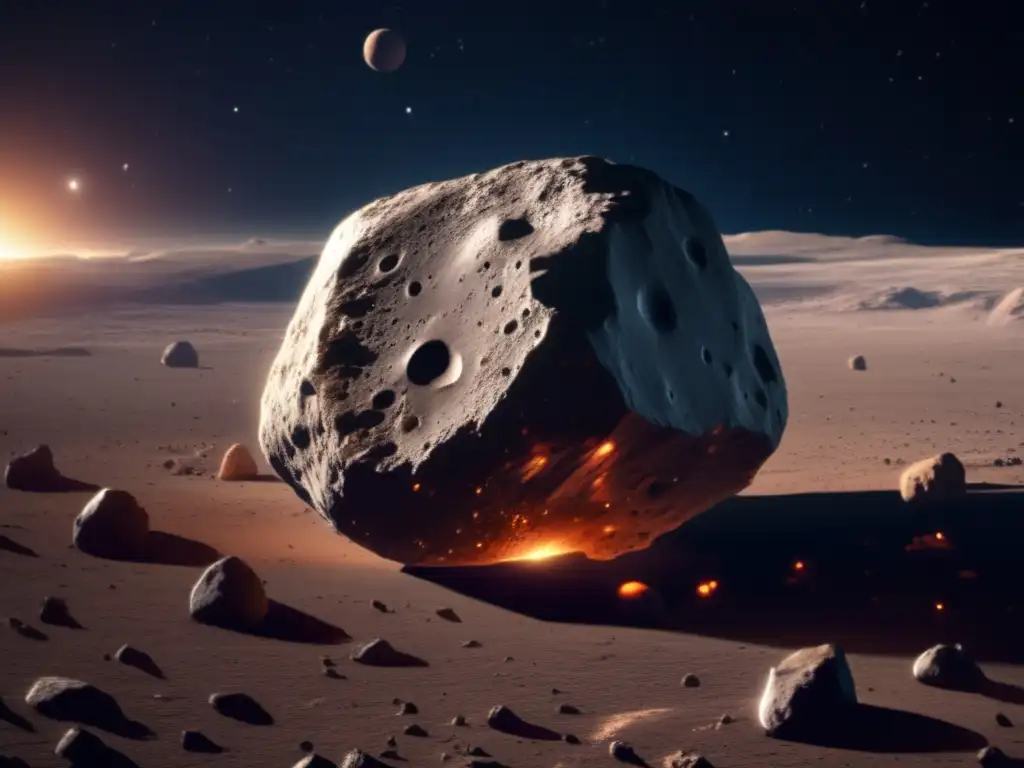The Science Behind Asteroid Composition And How It Affects Observation

Introduction
Asteroids have long fascinated scientists and space enthusiasts alike. These celestial objects provide valuable insights into the formation and evolution of our solar system. Understanding their composition is crucial for studying their origins and potential impact on Earth. In this article, we will explore the science behind asteroid composition and how it affects observation.
Asteroid Types and Compositions

Carbonaceous Asteroids
Carbonaceous asteroids are rich in carbon compounds, including organic molecules and water ice. These asteroids are thought to be remnants from the early stages of the solar system and may hold clues to the origins of life on Earth. Their dark surfaces absorb sunlight, making them difficult to observe directly.
Silicate Asteroids
Silicate asteroids are predominantly composed of rocky materials, such as silicates, metals, and small amounts of water. They are relatively brighter compared to carbonaceous asteroids, reflecting more sunlight. The parent bodies of many meteorites that fall to Earth are believed to be silicate asteroids.
Metallic Asteroids
Metallic asteroids are primarily made up of metallic elements, such as iron and nickel. These asteroids are usually very dense and have a high metal content. Their shiny surfaces reflect sunlight effectively, making them easier to observe and track. Some metallic asteroids are even considered potential targets for future mining endeavors.
Asteroid Spectroscopy

Reflectance Spectroscopy
Reflectance spectroscopy is a technique used to analyze the electromagnetic radiation reflected from the surface of an asteroid. By measuring the spectrum of reflected light, scientists can identify specific absorption features that correspond to different minerals and compounds present on the asteroid. This information provides valuable insights into its composition.
Infrared Spectroscopy
Infrared spectroscopy is particularly useful for studying the composition of carbonaceous asteroids. These asteroids emit thermal radiation in the infrared range, which can be detected and analyzed using specialized instruments. By studying the specific wavelengths emitted, scientists can determine the presence of organic molecules and water ice.
Radar Observations
Radar observations allow scientists to study the detailed shape and surface features of asteroids. By transmitting radio waves towards an asteroid and analyzing the reflected signals, researchers can create high-resolution images and maps. These observations provide valuable information about a target asteroid's composition, topography, and potential hazards.
Asteroid Composition and Mission Planning

Sample Return Missions
Understanding asteroid composition is crucial for planning sample return missions. By selecting asteroids with specific compositions, scientists can gather samples that offer unique insights into the early solar system and the building blocks of life. The composition of an asteroid also affects the design of spacecraft and sampling mechanisms to ensure successful recovery of valuable samples.
Impact Hazard Assessment
Asteroid composition plays a significant role in impact hazard assessment. Different types of asteroids have varying densities and structures, which affect their behavior during atmospheric entry. Knowing the composition helps scientists estimate the potential damage caused by an incoming asteroid. This information is vital for devising strategies to mitigate impact risks.
Resource Utilization and Space Mining
The composition of metallic asteroids is of particular interest for resource utilization and potential space mining. These asteroids contain valuable metals that could be extracted and used for future space missions or on Earth. By understanding their composition, scientists can identify suitable targets for resource utilization and develop mining techniques.
Frequently Asked Questions

-
What are carbonaceous asteroids?
Carbonaceous asteroids are rich in carbon compounds and hold clues to the origins of life.
-
How do scientists determine asteroid compositions?
Scientists use spectroscopic techniques, such as reflectance and infrared spectroscopy, to analyze the light reflected from asteroids.
-
Can asteroids be mined for resources?
Yes, metallic asteroids, in particular, are potential targets for future space mining endeavors.
-
Why is asteroid composition important for mission planning?
Asteroid composition affects spacecraft design, sample return missions, and impact hazard assessment.
-
How do radar observations contribute to asteroid study?
Radar observations provide detailed information about an asteroid's surface features, shape, and composition.
Conclusion
Asteroid composition plays a crucial role in our understanding of these fascinating celestial objects. By studying their composition through various spectroscopic techniques and radar observations, scientists gain valuable insights into the formation and evolution of our solar system. Understanding the composition of asteroids is not only important for scientific research but also for mission planning, impact hazard assessment, and potential resource utilization. We encourage you to share your thoughts and continue exploring the intriguing world of asteroids at Asteroid Realm.
Additional Resources

To delve deeper into the subject of asteroid composition and observation, we recommend checking out the following resources:
- "Asteroid Composition and Mineralogy" by NASA's Asteroid Redirect Mission Team
- "Spectral Analysis of Asteroids: Clues to the Early History of Our Solar System" by Planetary Science Institute
- "Radar Observations of Asteroids" by Jet Propulsion Laboratory (JPL)
 Setting Up A Backyard Observatory For Asteroid Tracking
Setting Up A Backyard Observatory For Asteroid Tracking Advanced: How To Measure An Asteroid's Spin Rate
Advanced: How To Measure An Asteroid's Spin Rate The Role Of Asteroid Observation In Predicting Future Close Approaches
The Role Of Asteroid Observation In Predicting Future Close ApproachesIf you want to discover more articles similar to The Science Behind Asteroid Composition And How It Affects Observation, you can visit the Telescopes and Asteroid Observation category.
Leave a Reply

Articulos relacionados: